LEE JUNG-SEOP: Art of Family and Longing
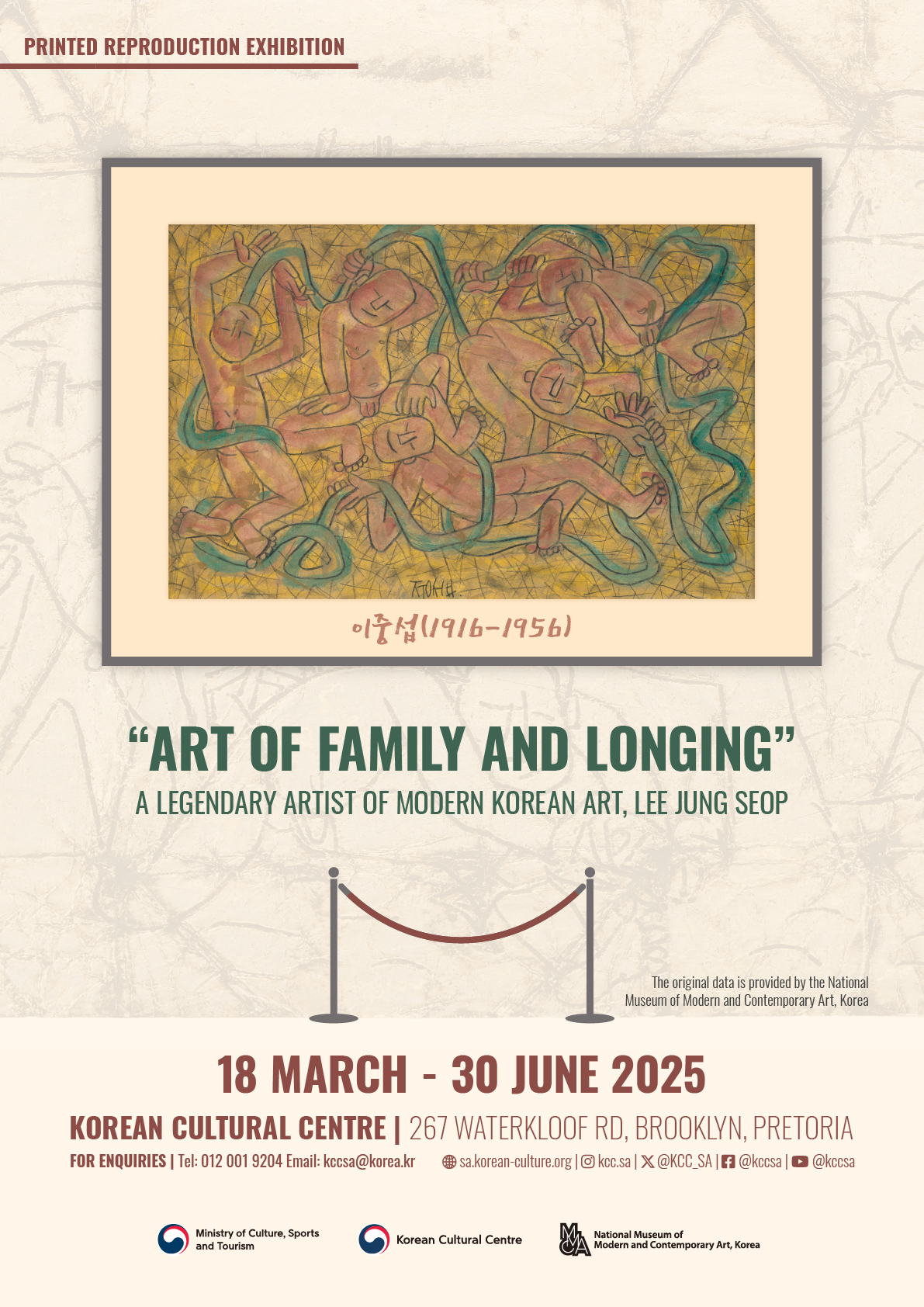
18 March-30 June 2025
9AM-4PM
Korean Cultural Centre SA
267 Waterkloof Road, Brooklyn, Pretoria
Discover the profound legacy of Lee Jung-seop, a master who shaped Korea's modern art history with his bold expressions and heartfelt depictions of family, longing, and resilience.
From his iconic Ox series to his evocative silver foil paintings, Lee's works capture the spirit of a turbulent era with unmatched emotional depth.
Join us to explore the life and art of a visionary whose influence continues to inspire generations.
DATES
18 March-30 June 2025
*The exhibition is closed on weekends and public holidays.
TIME
09:00-16:00
VENUE
Korean Cultural Centre SA
267 Waterkloof Road, Brooklyn, Pretoria
ADMISSION
Free
For enquiries, please contact:
012 001 9204 | kccsa@korea.kr
The works displayed in the exhibition are print editions provided by the National Museum of Modern and Contemporary Art, Korea.
The Artistic World of Lee Jung-seop
Lee Jung-seop’s works, around 300 in total, often feature traditional Korean motifs like children, bulls, family, and nature. These themes were influenced by his education at Osan School, where he developed an interest in his homeland's culture.
Among all his subjects, the ox is undoubtedly the most representative of Lee Jung-seop’s work. His Ox series, created during his time in Tongyeong, is considered the pinnacle of his artistic career. These paintings, which are relatively small (typically under 45×53 cm), are characterized by bold and intense lines that bring the bulls to life. Through his depiction of bulls, Lee expressed his inner emotions with explosive energy. The dynamic posture of the bull, with its front legs tensed as if ready to charge forward at any moment, showcases his exceptional ability to render movement through line work. This skill was rooted in his keen observation from an early age—so much so that a childhood anecdote recounts how he was once mistaken for a cattle thief because of his habit of closely studying bulls in the fields.
During his time at Bunka Gakuin in Japan, Lee created postcard paintings filled with surreal and dreamlike imagery that hinted at his romantic relationship with Masako. In contrast, the works he produced while taking refuge in Jeju Island during the Korean War depict simple yet heartfelt scenes of family and happiness. However, after his wife and children left for Japan, his paintings took on a sombre tone, often featuring desolate landscapes and metaphors for war. Despite financial hardship and a severe lack of materials, he continuously experimented with new techniques, one of the most famous being his silver foil paintings, created using cigarette foil wrappers.
After the Korean war, as he focused on reuniting with his family, his works became more powerful and filled with confidence. However, as financial difficulties and mental distress deepened, his hope of seeing his family again faded, and his paintings gradually lost focus, with blurred and melancholic landscapes taking centre stage.
Lee’s work gained recognition posthumously, with major exhibitions in the 1970s and 1980s, including the 1986 retrospective at the Ho-Am Art Museum, which attracted over 100,000 visitors.
The Life of Lee Jung-seop
Lee Jung-seop (1916–1956) was born in Pyeongwon, South Pyeongan Province in North Korea, as the youngest of three siblings in a landowning family. His talent for art emerged early, and after failing to gain admission to Pyongyang High School, he enrolled at Osan School, where he met his art teacher, Yim Yong-ryun. Yim, who had studied in the U.S. and worked in Paris, introduced Lee to sketching, a practice that influenced his artistic development. This period coincided with the rise of modern Korean art, marking a key influence on Lee's style.
In 1935, Lee began his formal art education at the Imperial Art School in Japan, later transferring to Bunka Gakuin, where he developed a bold, expressive style influenced by Fauvism. During this time, he met his future wife, Yamamoto Masako, who later became Lee Nam-deok in Korea.
In 1944, as World War II neared its end, Lee graduated and returned to Wonsan, leaving Masako in Japan. The following year, she moved to Korea, and the two were officially married. In 1946, they had their first child, but tragically, the baby died of diphtheria. This loss deeply impacted Lee, who channelled his grief into creating A Child Flying in the Sky Holding a White Star for the Liberation Commemoration Exhibition in 1947.
During the Korean War, Lee’s family fled to Busan in South Korea and later to Jeju Island. In 1952, financial struggles forced Masako and their two sons to move to Japan, while Lee remained in Korea. They reunited briefly in Tokyo in 1953, but were soon separated. This painful parting became a turning point for Lee, inspiring some of his greatest works.
In 1954, Lee settled in Tongyeong, where he created iconic pieces, including his Bull series and Couple. He moved between various cities, focusing on exhibitions while grappling with loneliness and alcoholism. Lee passed away from liver disease on September 6, 1956, at the Red Cross Hospital in Seoul.
WORKS displayed
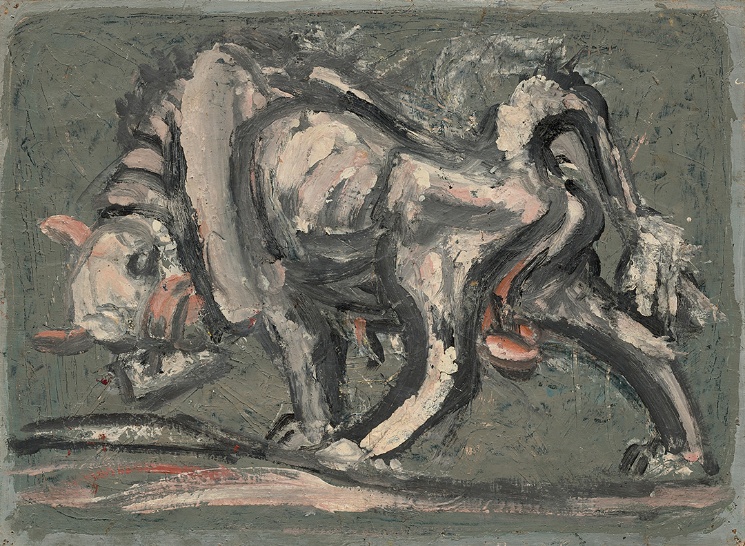
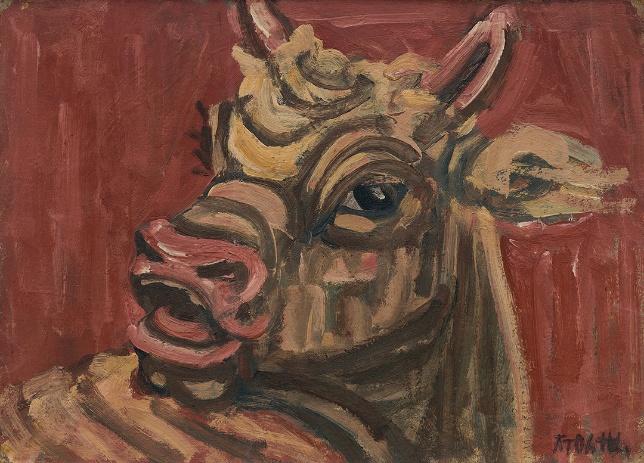
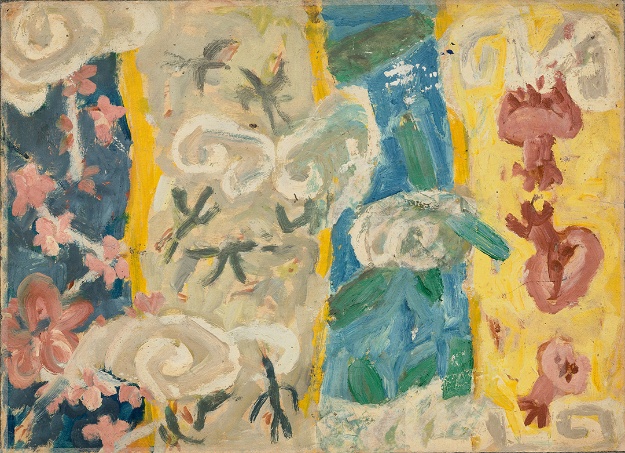
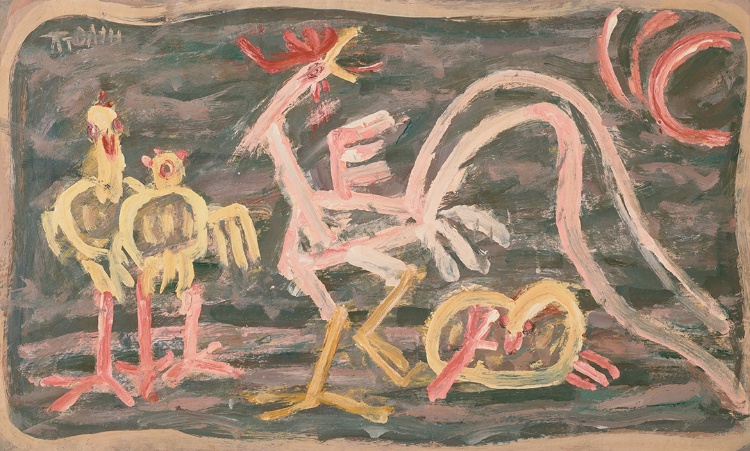

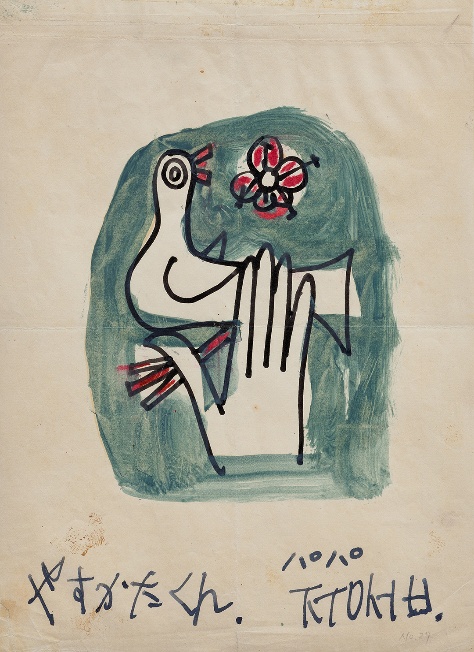


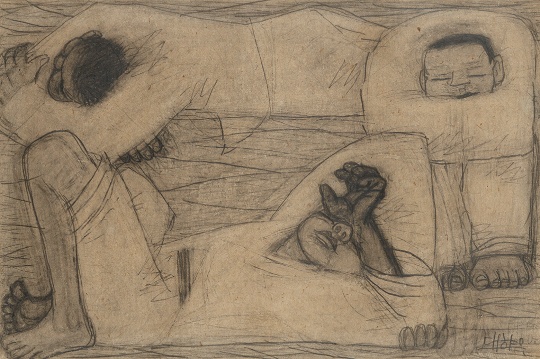
- attached file
